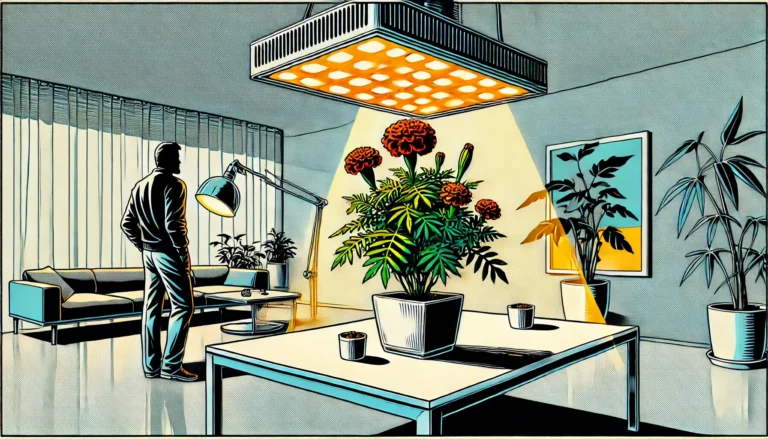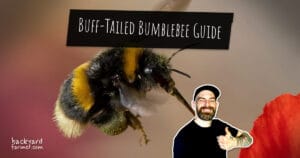Table of contents
- Introduction: Bringing Nature Indoors with Thoughtful Garden Design
- Choosing the Right Plants for Your Indoor Garden Design
- Plant Selection Guide for Indoor Gardens
- Optimizing Space in Small Indoor Gardens
- Light Requirements for Indoor Vegetable Gardens
- Balancing Aesthetics and Functionality in Indoor Garden Design
- Maintaining Your Indoor Vegetable Garden
- Conclusion: Crafting Your Indoor Garden Masterpiece
Introduction: Bringing Nature Indoors with Thoughtful Garden Design
Imagine transforming a corner of your home into a vibrant, living space with a carefully crafted indoor garden design where fresh vegetables flourish year-round. An indoor vegetable garden not only brings the beauty and tranquility of nature inside but also serves as a functional addition to your living space.
Whether you’re a seasoned gardener or just starting out, designing an indoor garden that balances aesthetics with functionality can be both enjoyable and rewarding.
In this guide, we’ll explore how to:
- Create an indoor garden that complements your home’s interior style.
- Ensure your garden is practical and productive.
- Select the right plants for your space.
- Optimize light and space for maximum growth.
By the end of this journey, you’ll have the tools and knowledge to design a thriving indoor vegetable garden that:
- Enhances your home’s decor.
- Provides fresh, home-grown produce at your fingertips.
So, let’s dive in and explore the art of indoor garden design—where beauty meets functionality.
Choosing the Right Plants for Your Indoor Garden Design
Selecting the right plants is essential for successful indoor garden design. Your choices affect productivity and integration with your space. Here’s how to make informed decisions.
Plant Selection Based on Light Levels, Space, and Aesthetic Appeal
When choosing plants for your indoor garden design, consider your home’s light levels and space. Different plants have varying needs:
- Low Light: If your space has limited natural light, select shade-tolerant vegetables like lettuce, spinach, or herbs like mint and parsley. These plants thrive in indirect sunlight, making them perfect for darker rooms.
- Moderate to Bright Light: For brighter areas, grow tomatoes, peppers, or herbs like basil and rosemary. These plants need more sunlight but will reward you with abundant growth and produce, making them ideal for a functional and visually appealing garden.
- Space Considerations: If space is tight, choose compact or dwarf vegetable varieties. Small pots can house chili plants, bush beans, or dwarf tomatoes, allowing you to grow produce without overwhelming your space. This approach is key in small space gardening and effective indoor garden design.
- Aesthetic Appeal: Don’t overlook the visual aspect. Choose plants that meet your gardening needs and enhance your home’s decor. Deep green herbs add a lush, natural look, while colorful peppers bring vibrancy to your indoor vegetable garden.
For more in-depth advice on selecting and caring for indoor plants, the Royal Horticultural Society offers excellent guidance on indoor gardening.
To help you choose the right plants, refer to the table below:
Plant Selection Guide for Indoor Gardens
| Plant Type | Light Requirements | Space Requirements | Ease of Growth | Aesthetic Appeal |
| Basil | Moderate to Bright | Compact | Easy | Lush green foliage, aromatic |
| Lettuce | Low to Moderate | Compact | Very Easy | Bright green leaves, adds a fresh look |
| Spinach | Low to Moderate | Compact | Very Easy | Dense green leaves, suitable for small spaces |
| Tomatoes (Dwarf) | Bright | Moderate (Needs Support) | Moderate | Red fruit adds vibrant color, requires staking |
| Chili Peppers | Moderate to Bright | Compact | Moderate | Bright red/yellow/orange peppers, striking visual |
| Marigolds | Moderate | Compact | Easy | Bright orange/yellow flowers, good companion plant |
| Radishes | Low to Moderate | Compact | Very Easy | Small, round roots with colorful skins |
| Rosemary | Bright | Compact to Moderate | Moderate | Woody stems with fragrant needle-like leaves |
| Nasturtiums | Bright | Compact to Sprawling | Easy | Colorful flowers, trailing habit |
This table provides a quick reference for selecting plants based on your environment and aesthetic preferences. It makes planning your indoor vegetable garden easier.
Easy-to-Grow Vegetables for Beginners
If you’re new to indoor garden design, start with easy-to-grow vegetables. These will ensure early success and boost your confidence. Ideal choices include:
- Herbs: Herbs like basil, chives, and oregano are easy to grow and useful in the kitchen. They require minimal care, making them perfect for beginners in indoor vegetable gardening.
- Leafy Greens: Lettuce, spinach, and kale grow quickly and can be harvested multiple times. These greens are forgiving in terms of light and water needs, making them beginner-friendly and well-suited for small space gardening.
- Radishes: Radishes are fast growers, often ready for harvest within a few weeks. Their small size makes them ideal for container gardening in compact indoor gardens.
These plants are resilient and adapt well to indoor conditions. They provide you with fresh produce and a sense of achievement in your indoor garden design.
Mixing Ornamental Plants with Vegetables for a Visually Appealing Garden
To create a garden that’s as beautiful as it is functional, integrate ornamental plants with your vegetables. This approach can enhance overall aesthetics while also benefiting plant health:
- Companion Planting: Combine certain ornamental plants with vegetables to deter pests and improve growth. For example, marigolds repel harmful insects, making them great companions for vegetables like tomatoes or peppers.
- Color Contrast: Use flowering plants to add splashes of color to your indoor garden design. Flowers like nasturtiums or calendula not only look attractive but are also edible, contributing to both beauty and utility.
- Leaf Varieties: Incorporate plants with different leaf textures and colors to add visual interest. Mixing feathery dill with broad-leaved lettuce creates a dynamic and engaging display in your indoor vegetable garden.
By thoughtfully selecting and combining plants, you create an indoor garden that is productive, visually appealing, and a reflection of your personal indoor garden design style.
Optimizing Space in Small Indoor Gardens
Maximizing space is crucial when designing a small indoor garden. Whether you live in an apartment or have limited room, smart design strategies can help you create a productive and visually appealing indoor garden. Here’s how to make the most of your available space.
Vertical Gardening Ideas: Using Shelves, Hanging Baskets, and Trellises
Vertical gardening is a highly effective way to optimize limited space. By growing plants upwards rather than outwards, you can make the most of every inch of your indoor garden.
- Shelves: Install shelves along walls to create multiple layers for plant placement. Herbs, small pots of leafy greens, and trailing plants like ivy can thrive on these levels. This method not only saves floor space but also adds a decorative element to your indoor garden design.
- Hanging Baskets: Utilize ceiling space by installing hanging baskets. These are perfect for trailing plants like strawberries, cherry tomatoes, or herbs such as thyme and oregano. Hanging baskets free up counter or floor space while allowing plants to cascade down, adding visual interest.
- Trellises: For plants that climb, like peas or beans, use trellises to guide their growth vertically. Place trellises against walls or in pots with climbing plants. This strategy keeps plants organized and contained, making it easier to manage your indoor vegetable garden.
Container Gardening: Choosing the Right Pots and Planters for Your Space
Choosing the right containers is essential for small space gardening. The size, shape, and material of your pots can significantly impact the health of your plants and the efficiency of your indoor garden design.
- Size and Shape: Select containers that fit your space while providing enough room for plant roots to grow. In tight spaces, use tall, narrow pots for deep-rooted plants like carrots, or shallow, wide containers for herbs and leafy greens. Stackable planters are also a great option, allowing you to grow multiple plants in a compact area.
- Material: Consider the material of your containers. Lightweight plastic or fabric pots are easy to move and rearrange, which is useful in a small indoor garden. Alternatively, ceramic or terracotta pots can add a decorative touch, though they may be heavier and less flexible in terms of placement.
- Drainage: Ensure your pots have adequate drainage to prevent waterlogging, which can be particularly problematic in indoor settings. Use pots with built-in drainage holes, or add a layer of pebbles at the bottom to improve drainage.
Using Multi-Functional Furniture to Incorporate Gardening
In small spaces, every piece of furniture can serve multiple purposes, including supporting your indoor garden design. Multi-functional furniture helps you maximize space while integrating your garden into your living area seamlessly.
- Plant Stands and Tables: Use plant stands that double as side tables or coffee tables. These can hold potted plants while also serving as functional furniture pieces in your living room or balcony.
- Window Sills and Ledges: Turn window sills and ledges into mini-gardens. These spots are perfect for sun-loving plants like herbs, succulents, or small flowering plants. By using these often-overlooked areas, you can expand your garden without sacrificing space.
- Storage Benches: Incorporate storage benches with built-in planters. These benches can store gardening tools while providing a spot for growing small plants. This approach is particularly useful in balconies or small patios where space is limited.
Light Requirements for Indoor Vegetable Gardens
Lighting is a critical factor in the success of your indoor garden design. Understanding the light needs of your plants and providing adequate lighting will ensure healthy growth and abundant harvests. Here’s how to optimize light for your indoor vegetable garden.
Understanding Natural vs. Artificial Lighting
Indoor gardens can thrive with a combination of natural and artificial lighting. It’s important to understand the differences and how each type of light can benefit your plants.
- Natural Light: If you have access to natural light, place your garden near windows that receive direct sunlight. South-facing windows are ideal because they provide the most consistent and intense light throughout the day. However, even east or west-facing windows can support your indoor garden if you choose plants with lower light requirements.
- Artificial Light: When natural light is insufficient, especially during winter months or in spaces without adequate windows, artificial lights can supplement or replace natural light. LED grow lights are energy-efficient and effective for indoor gardening. They provide the full spectrum of light that plants need for photosynthesis, mimicking natural sunlight.
By combining natural and artificial light sources, you can create an optimal environment for your indoor garden design.
Best Practices for Placing Plants to Ensure Adequate Light Exposure
Proper placement of plants is key to ensuring they receive the right amount of light. Follow these best practices to maximize light exposure in your indoor vegetable garden.
- Close to Windows: Place light-loving plants, like tomatoes and peppers, as close to the windows as possible. This ensures they receive maximum natural light during the day.
- Rotating Plants: Rotate your plants regularly to ensure all sides receive equal light exposure. This prevents uneven growth and helps maintain the overall health of your plants.
- Using Reflective Surfaces: Enhance light distribution by placing reflective surfaces, such as mirrors or white walls, near your garden. These surfaces bounce light back onto the plants, increasing the overall light exposure without additional energy costs.
- Staggered Shelves: If you’re using vertical gardening techniques, arrange your plants on staggered shelves. This setup prevents taller plants from shading smaller ones, ensuring each plant gets enough light.
Using Grow Lights: Types, Placement, and Timing for Optimal Growth
Grow lights are an essential tool for indoor gardens, especially in environments with limited natural light. Here’s how to use them effectively:
- Types of Grow Lights: The most common types are fluorescent, LED, and HID (High-Intensity Discharge) lights. LED lights are recommended for indoor gardens due to their energy efficiency, long lifespan, and ability to provide the full light spectrum needed for plant growth.
- Placement: Position your grow lights about 6-12 inches above your plants, depending on the light type and the plants’ needs. Adjust the height as plants grow to maintain an optimal distance. Ensure that the light covers all plants evenly.
- Timing: Mimic the natural day-night cycle by setting your grow lights on a timer. Most vegetables need 12-16 hours of light per day for optimal growth. Avoid continuous lighting, as plants also need a period of darkness for healthy development.
By using grow lights effectively, you can ensure that your indoor garden receives consistent and adequate light, leading to a more productive and vibrant garden.
For a detailed comparison of the best LED grow lights for indoor gardens in 2024, check out our comprehensive guide.
Balancing Aesthetics and Functionality in Indoor Garden Design
Creating an indoor garden that is both beautiful and practical requires careful planning. By balancing aesthetics and functionality, you can design a space that is not only visually pleasing but also easy to maintain and highly productive. Here’s how to achieve that balance.
Designing with Aesthetics in Mind: Matching Your Garden with Your Home’s Interior Style
Your indoor garden should seamlessly blend with your home’s interior style. Here are some ways to ensure that your garden complements your existing decor:
- Choosing a Color Scheme: Match the colors of your planters and accessories with your home’s color palette. For example, if your interior features neutral tones, opt for sleek, modern planters in white, grey, or black. If your space is more vibrant, consider colorful pots that echo the hues in your home.
- Plant Selection for Visual Appeal: Select plants that enhance the aesthetic of your space. For a minimalist look, choose plants with clean lines, such as snake plants or succulents. For a more eclectic style, mix various plants with different textures and colors to create a lively, dynamic display.
- Incorporating Decorative Elements: Integrate decorative elements like artistic plant stands, stylish shelving, or unique containers. These additions can elevate the visual appeal of your indoor garden while maintaining a cohesive look with your home’s decor.
By thoughtfully selecting plants and accessories, you can create an indoor garden that enhances your living space and reflects your personal style.
Functional Design Tips: Easy Access, Maintenance, and Plant Care
While aesthetics are important, functionality is key to ensuring that your indoor garden thrives. Here are some functional design tips to consider:
- Ease of Access: Arrange your plants so they are easy to reach for watering, pruning, and harvesting. Avoid placing plants in hard-to-reach spots where they might be neglected.
- Efficient Layout: Design your garden layout to make the best use of space. Group plants with similar light and water requirements together, which simplifies care and helps them thrive. Consider placing larger plants in the back or corners, with smaller ones in front for easy access and visibility.
- Maintenance-Friendly Materials: Choose materials that are easy to clean and maintain. For example, use trays or mats under your pots to catch excess water and soil, preventing damage to your furniture and floors. Opt for containers that are lightweight and easy to move, so you can rearrange your garden as needed.
A well-thought-out design not only looks good but also makes plant care more manageable, ensuring your indoor garden remains a joy to maintain.
Creative Ideas for Integrating Your Garden into Living Spaces
Integrating your indoor garden into your living spaces can make your home feel more connected to nature. Here are some creative ideas to do just that:
- Living Wall Installations: A living wall or vertical garden can serve as a stunning focal point in any room. These installations are perfect for small spaces and can be customized to fit any wall. Choose a mix of trailing plants, small shrubs, and even edible herbs to create a vibrant, living piece of art.
- Kitchen Gardens: Incorporate a kitchen garden into your cooking space. Use shelves, window sills, or countertops to grow herbs and small vegetables. Not only does this add greenery to your kitchen, but it also provides fresh ingredients for your meals right at your fingertips.
- Multi-Functional Furniture: Use multi-functional furniture that incorporates plants. For instance, a coffee table with a built-in planter or a bookshelf with designated spaces for potted plants can add greenery to your living area while serving a practical purpose.
- Indoor Terrariums: Create a small, self-contained garden with an indoor terrarium. These are perfect for tabletops or shelves and can add a touch of nature to any room. Terrariums are low-maintenance and can be designed to match any decor style.
By integrating your garden into your living spaces, you not only enhance the aesthetics of your home but also bring the calming presence of nature indoors.
Maintaining Your Indoor Vegetable Garden
Once your indoor garden is set up, regular maintenance is essential to keep it thriving. Proper care ensures healthy plants, continuous growth, and a productive harvest. Here’s how to maintain your indoor vegetable garden effectively.
Routine Care: Watering, Feeding, and Pruning
Consistent care is the foundation of a healthy indoor garden. Here’s how to manage the essential tasks of watering, feeding, and pruning:
- Watering: Indoor plants need regular watering, but the frequency depends on the plant type and indoor conditions. Check the soil moisture regularly by touching it. If the top inch of soil feels dry, it’s time to water. Use pots with drainage holes to prevent waterlogging, which can lead to root rot.
- Feeding: Indoor plants require nutrients to grow well, especially since they don’t have access to natural soil nutrients. Use a balanced, water-soluble fertilizer every two to four weeks during the growing season. Adjust the feeding schedule according to the specific needs of your plants, and reduce feeding during the winter when growth slows.
- Pruning: Regular pruning helps plants maintain their shape, encourages new growth, and prevents overcrowding. Remove dead or yellowing leaves to keep your plants healthy. For fruiting plants like tomatoes or peppers, pinch off excess flowers to direct energy toward producing larger fruits.
By following these routine care practices, you’ll keep your indoor vegetable garden healthy and productive throughout the year.
Managing Pests and Diseases in an Indoor Environment
Even indoor gardens can face challenges from pests and diseases. However, with proper vigilance and management, you can protect your plants and maintain a healthy garden:
- Identifying Common Pests: Indoor gardens can attract pests like aphids, spider mites, and whiteflies. Inspect your plants regularly for signs of infestation, such as sticky leaves, webbing, or tiny insects. Early detection is key to preventing a full-blown pest problem.
- Natural Pest Control: Use natural methods to control pests and avoid harsh chemicals. Neem oil, insecticidal soap, and homemade garlic or chili sprays can effectively manage pests without harming your plants. Additionally, introducing beneficial insects like ladybugs can help control pest populations naturally.
- Preventing Disease: Diseases such as powdery mildew, root rot, and fungal infections can affect indoor plants. To prevent disease, ensure good air circulation around your plants, avoid overwatering, and keep your garden area clean. If you notice signs of disease, such as discolored leaves or moldy growth, isolate the affected plants and treat them promptly.
With proactive pest and disease management, you can maintain a thriving indoor vegetable garden without the need for harmful chemicals.
Seasonal Adjustments and How to Keep Your Garden Thriving Year-Round
Indoor gardens can be maintained year-round, but they require adjustments as the seasons change. Here’s how to adapt your care routine to keep your garden thriving:
- Adjusting Light Levels: As daylight hours shorten in winter, your plants may need additional light. Consider increasing the duration your grow lights are on or adding more artificial lighting to compensate for the reduced natural light.
- Regulating Temperature: Indoor gardens benefit from consistent temperatures. During winter, keep your garden away from drafty windows or doors to prevent cold stress. In summer, avoid placing plants too close to windows where intense sunlight can overheat them.
- Managing Humidity: Indoor heating in winter can lower humidity levels, which may affect your plants. Use a humidifier or place water trays near your plants to maintain adequate humidity. Conversely, in summer, ensure good ventilation to prevent excessive humidity and mold growth.
- Rotating Crops: If you grow year-round, consider rotating your crops to avoid depleting the soil of specific nutrients. For example, after harvesting a crop of tomatoes, plant leafy greens or herbs in the same space to refresh the soil.
By making these seasonal adjustments, you can ensure that your indoor vegetable garden remains healthy and productive throughout the year, regardless of external conditions.
Certainly! Here’s the conclusion formatted for easier readability while retaining the key content:
Conclusion: Crafting Your Indoor Garden Masterpiece
Designing and maintaining an indoor vegetable garden that balances aesthetics with functionality is a truly rewarding endeavor. By:
- Choosing the right plants
- Optimizing your space
- Ensuring proper lighting
- Maintaining a regular care routine
You can create a thriving garden that not only enhances your living space but also provides fresh, home-grown produce.
Your indoor garden design should reflect your personal style while being practical and easy to manage. Whether you’re working with a small space or have room to expand, the key is to balance beauty with utility.
With thoughtful planning and consistent care, your indoor garden will become a cherished part of your home, bringing nature indoors and enriching your everyday life.
As you embark on this journey:
- Remember that each step—plant selection, lighting adjustments, pruning—contributes to your garden’s success.
- Enjoy nurturing your plants and watching them grow.
- Take pride in the unique space you’ve created.
Your indoor vegetable garden is more than just a collection of plants; it’s a living part of your home that reflects your creativity and commitment to sustainability.
Now that you have the knowledge and tools, it’s time to get started:
- Begin small
- Experiment with different designs
- Enjoy the journey of bringing the outdoors inside





